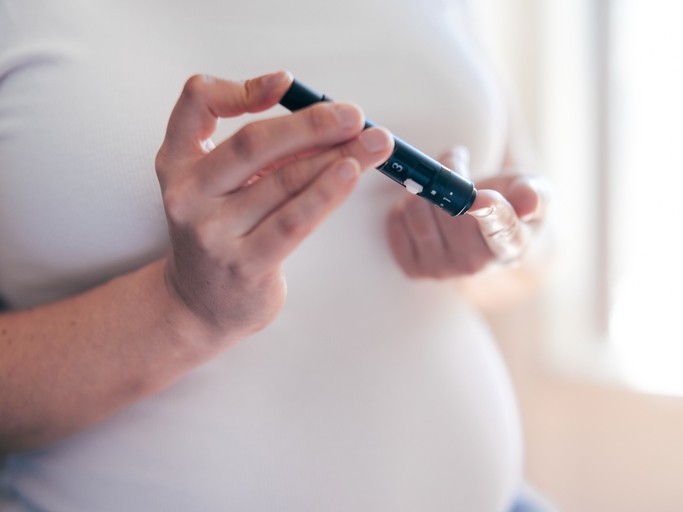Myo-inositol supplementation effective in managing gestational diabetes – meta-analysis

Researchers found that myo-inositol supplementation is effective in managing gestational diabetes when compared against routine treatment in women.
“Compared with routine treatment in pregnant women with gestational diabetes, myo-inositol supplementation could lead to remarkably decreased treatment requirement with insulin and homeostasis model assessment of insulin resistance (HOMA-IR), but demonstrated no obvious impact on birth weight, cesarean section, or the need of NICU,” wrote researchers in The Journal of Maternal-Fetal & Neonatal Medicine.
HOMA-IR – homeostatic model assessment of insulin resistance – is used to gauge how well the body responds to insulin, where a higher score suggests greater resistance to insulin.
Gestational diabetes is glucose intolerance with an onset during pregnancy. It can cause some complications for women and their offspring, including hypertensive disorders and neonatal hypoglycemia. Managing gestational diabetes is therefore crucial.
Myo-inositol can produce insulin-sensitising effects and decrease the occurrence of gestational diabetes in women. However, its efficacy remains controversial.
To study the effects of myo-inositol supplementation on metabolic status for gestational diabetes, researchers conducted a meta-analysis.
The study
Several databases, including PubMed, EMbase, Web of science, EBSCO, and Cochrane library databases were systemically searched from inception to October 2021.
Researchers included four randomised controlled trials (RCTs) assessing the effect of myo-inositol supplementation on the outcomes of women with gestational diabetes.
A total of 317 patients between 25–38 years old were included in this meta-analysis.
The participants were of Indian and European descent and had a BMI of 20–33 kg/m2.
They were all diagnosed with gestational diabetes, where at least one out of three thresholds of glucose concentration was exceeded.
The three thresholds included 92, 180, and 153 mg/dl for zero, one and two hours, respectively, after a 75-g, two-hour glucose tolerance test.
Intervention treatments were myo-inositol supplementation versus no myo-inositol supplementation. All women obtained the routine supplementation with folic acid, iron, calcium and vitamin D.
For the Indian study, 49 participants took 1000 mg myo-inositol twice daily, and the other 50 participants did not.
The treatment dosage for one European study was 2000 mg myo-inositol plus 50 mg α-lactalbumin twice a day. There were 60 participants who took myo-inositol, and 59 who did not.
For the other two European studies, it was 4000 mg myo-inositol a day.
Researchers reviewed information such as fasting glucose and treatment duration between two groups.
HOMA-IR was evaluated at eight weeks after the treatment invention. All studies started the treatment at 24 weeks gestation, except for one Indian study that started at 14 weeks.
Results
The results showed that compared with routine treatment for gestational diabetes, myo-inositol supplementation significantly reduced the need for insulin treatment.
For example, in the Indian study, five out of 49 in the myo-inositol group required insulin treatment post intervention. In non-myo-inositol group, the number was 16 out of 50.
A similar trend was observed in the other European studies.
When researchers combined statistically significant results from three studies, 10 out of 129 in the myo-inositol group required insulin treatment, while 33 out of 129 in the non-myo-inositol group required the same.
HOMA-IR scores were also higher for the non-myo-inositol groups – the mean HOMR-IR score for the myo-inositol groups were between 3.1–3.5. For the non-myo-inositol groups, it was 5.3–6.1.
Information such as birth weight, the need for cesarean section and Neonatal Intensive Care Unit (NICU), were also assessed.
The researchers found that myo-inositol supplementation showed no impact on birth weight, incidence of caesarean section, or the need of NICU.
For example, in one European study, the average birth weight of offspring for mothers who took myo-inositol was 3.2 kg, while those who did not take myo-inositol had an average offspring weight of 3.1 kg.
In the Indian study, 26 out of 49 mothers who took myo-inositol underwent caesarean section, and four were admitted to NICU.
In the group that was not supplemented, 31 out of 50 underwent caesarean section, and one was admitted to NICU.
Myo-inositol shown to be effective
The results found that myo-inositol supplementation can significantly reduce the need of insulin treatment and HOMA-IR, but resulted in no improvement in other outcomes including birth weight, cesarean section or the need of NICU.
Inositol is a type of sugar that can mimic insulin.
Myo-inositol, a form of inositol, has shown promise in managing gestational diabetes. It works by increasing the body’s sensitivity to insulin, leading to better control of blood sugar levels, said researchers.
“Our results confirmed the efficacy of myo-inositol supplementation to reduce treatment requirement of insulin and HOMA-IR in women with gestational diabetes, suggesting that myo-inositol supplementation should be recommended for the translation into clinical practice.
However, myo-inositol was administered at the doses ranging from 2000 to 4000 mg daily among the included RCTs, and more studies should be conducted to find the ideal dose of myo-inositol supplementation. In addition, it is necessary to study the best time points to begin myo-inositol supplementation for pregnant women with gestational diabetes in order to improve its efficacy,” concluded the researchers.
Source: Journal of Maternal-Fetal and Neonatal Medicine
DOI: 10.1080/14767058.2023.2228450
“The effect of iron supplementation in preterm infants at different gestational ages”
Authors: Huan Chen, Jiayan Xiong et al.


















